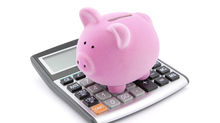The Cost-Benefit Mindset
You walk into a convenience store while on a break from studying for your midterms. You planned to buy just a cold bottle of Starbucks, but you also end up checking out the other snacks and goods the store has to offer. In a few minutes, you leave the store with your Starbucks drink, as well as a bag of chips and a protein bar.
According to marketing expert Brandon Gaille, the average person will spend over $110,000 on impulsive purchases over his or her lifetime.
When it comes to spending money, we are constantly making decisions. “What do I want to buy? Where do I want to buy it from? Are there other things I can buy instead?” and so forth. Essentially, it all boils down to the question of cost and benefit. “Is this Starbucks drink worth the $2 it costs?” On the surface, a purchase may seem like a very straightforward transaction supported by saying “Yes, I would pay $2 for that drink.” However, underneath this basic sentence lies many more factors that we may not consciously think about. According to the value-driven marketing model, if a customer’s perceived benefits outweigh the perceived costs, the purchase will be deemed to have positive (superior) value and will thus be made.

With these factors in mind, you may find yourself asking “Is it worth $2 AND 5 less minutes of studying to buy this drink? Will people also think I’m working hard because I’m drinking Starbucks?”
An even less obvious area to think about is the situational benefits and costs. You might be willing to pay $2 (and 5 minutes of walking) for the Starbucks drink at this very moment because you have midterms and are stressed out. But what if it was just a regular day of class and you weren’t even tired? What if you WERE tired but you also urgently needed to use the restroom with none nearby? Would you still be willing to make that purchase?
Understandably, it’s difficult and sometimes unreasonable to analyze purchases so deeply. For larger and costlier purchases, it would probably be worth your time to think about the transaction value thoroughly. By being vigilant of the underlying factors in the cost-benefit mindset, you can make sound and less-impulsive purchases, which is one of the important basics of personal finance.
For some more interesting statistics on impulsive buying, check out Brandon Gaille’s website here.




